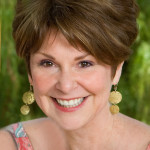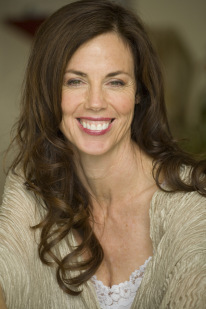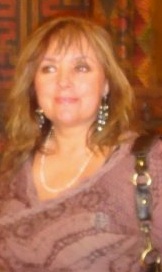Contact Yoga: The Seven Points of Connection & Relationship by Tara Lynda Guber with Anodea Judith, PhD Photography by Norman Seff Preface by Anthony Robbins Foreword by Deepak Chopra Mandala Publishing Contact Yoga presents an inspiring new vision of yoga created to deepen your relationships with lovers, friends, family, and other intimates in your life. soldes coque iphone Contact Yoga explores that mysterious and dynamic edge where two people connect: physically, emotionally, and spiritually. soldes coque iphone 2019
spirituality
Three Causes of Spiritual Illness

Three Causes of Spiritual Illness by Hank Wesselman, PhD. As we pass through life on the physical plane, things happen. We contract flus and colds and viruses, and we sustain physical injuries, like falling off our bikes as children or experiencing sports injuries. As adults, we may throw our back out or experience a serious car accident, in the process, acquiring bruises, cuts, sprains, infections, lacerations, and sometimes broken bones. Some of us may also experience serious illnesses of an internal nature like cancer or hepatitis, heart disease or multiple sclerosis. Eventually we pass through old age and the progressive infirmity and death of the physical body. coque iphone 8 These are the givens–they are all to be expected as part of what it means to be an embodied, living being. But these are all effects, and what the shaman is primarily interested in is the cause. coque iphone outlet Watch a video of Hank discussing the three causes of spiritual illness:
On Spirituality – Manly P. Hall
In our daily manifestation we are constantly in the presence of energies, but we take them for granted. We never question how it is that we can raise a finger, use a typewriter, or play a musical instrument. We see nothing mysterious about taking a walk, talking with our friends, or performing various arduous tasks in the name of health. The mystery behind the commonplace is something we do not understand but use constantly with little inquiry into our own nature. We have never questioned the process by which we are alive because we more or less take for granted that the questions cannot be answered and that whatever lies behind us is a mystery. Science has never undertaken to explore it. Philosophy has never been able to create a completely comprehensible exposition of principles, and religion deals in such abstract vagaries that we are not sure what part is true and what part is imaginary. But some have questioned and from the questioning developed various concepts by means of which it might be possible for us to explore this unknown world of causes.
Man specializes with his own mind, and whatever most occupies his mind is most supported by his resources. Persons interested in making a living devote their energies to this task, only occasionally taking time for meditation or reflection. It would seem, therefore, that there must be a motion, a process within our own thinking through which we can create the instrument for self-exploration. There must be some way of turning the mind from external addictions to the examination of internals. Most persons have never attempted to do this, and most do not even believe it possible. But there must be some way to use our faculties to discover ourselves, rather than using them constantly to buildup our store of knowledge about externals which, in the last analysis, are of very little basic importance to ourselves. To be given the equipment that we possess, only to use it for a few years, and then have both ourselves and our equipment fade away, seems to be contrary to the economy of nature. It would appear more reasonable that we have not yet attained to that degree of evolution which will enable us to develop the faculties of self-examination. They must lurk somewhere in our extrasensory perception band, and if we cannot find them, we will never know ourselves nor actually experience our true place in the universe or in the universal plan for ourselves.
It was first assumed that before we could penetrate the illusion of matter, we had to turn our attention away from matter, that to free our inner equipment for its apperceptive function, we had to relieve it of the burden of its continuous perceptive function, for every sensory perception that we possess is held in fascination in the world of phenomena. It is not so likely that we will be able to disentangle our functional resources and turn them in another direction. In order to explore causes, we must break the tie which forces us to continually use our energies as an out-flowing toward externals. This is accomplished through a series of experiences in which we come to understand by degrees the unity of this life principle in ourselves. To the degree we understand life, we participate in it, and we are closer to enlightenment when we are tied to reality by bonds of intense sympathy. If our dedications are towards enlightenment, we have a greater probability of attaining it than when our dedications are turned to other things and enlightenment is merely an avocational interest.
To attempt this it is necessary to reverse the involutionary process which ties energy to matter, and set up an evolutionary process within ourselves. Involution is the breaking up of one life into many manifestations. Evolution is the restoration of unity, the bringing back of diversity until oneness is re-established. Illusion is diversity. Reality is unity. To quiet down the experiences of diversity, to gradually bring separate things together, to search for unities where we have accepted diversities, to seek forever the one in the many and to discover finally the one behind the many – these are the labors of spiritual evolution. We begin symbolically by seeking the common ground of things and, in so doing, overcome forever the antagonisms and the conflicts which arise from our inability to perceive the identities of life.
~Excerpted from Manly P Hall Lecture #193 – “The Mystical Experience Union with The External Self.”
Phyllis Firak Mitz – Astrologer
 Phyllis F. Mitz, M.A. has enjoyed a flourishing astrology practice for over 20 years. Using her unique blend of astrology, psychology (in which she holds her Master’s Degree) and spirituality, (in which she is pursuing a Doctorate Degree) Mitz has counseled thousands of people from all walks of life, including celebrities, politicians, and corporate executives, on the best ways and times to find success in life, love and work.
Phyllis F. Mitz, M.A. has enjoyed a flourishing astrology practice for over 20 years. Using her unique blend of astrology, psychology (in which she holds her Master’s Degree) and spirituality, (in which she is pursuing a Doctorate Degree) Mitz has counseled thousands of people from all walks of life, including celebrities, politicians, and corporate executives, on the best ways and times to find success in life, love and work.
About Phyllis’s work… Phyllis’s approach towards astrology is inspiringly spiritual, insightfully psychological, yet immensely practical, too! Her belief is everything about a person’s astrological chart is a reflection of their soul’s intention for learning, upliftment and growth. Indeed, Phyllis loves using astrology as an avenue for awakening to one’s higher purpose and opportunities. Phyllis describes in practical terms how that is so and how clients can make full use of what they are given.
Developing a Personal Spirituality
By: Lionel Corbett
Many of us are no longer committed to any historical religious tradition, yet we still have a personal sense of connection to the sacred dimension. This situation is not surprising; the traditional images of God no longer work for us, and we often cannot relate to the doctrine and dogma of the traditions, such as their attitude to women and to sexuality. However, human beings have an innate spirituality which makes us want to connect to the sacred. Our ancestors have been on the earth for over 100,000 years, and we have archaeological evidence that human spiritual practices go back to these earliest beginnings, suggesting that spirituality is an intrinsic part of human nature. In contrast to this long period, the Judeo-Christian tradition is only about two thousand years old. This tradition has tried to force our innate spirituality into its particular containers, as if their way is the only way to connect to the sacred. When there is no good fit between traditional teachings and our own beliefs, we feel we have nowhere to go, no way to express our deep need for connection to the transpersonal dimension. Our problem then becomes how to make this connection in a personal way that fits with our own personality and with our contemporary level of consciousness. One common approach is to develop our own blend of many spiritual traditions, taking from all of them practices and ideas which are helpful.
Another approach is to use Jung’s depth psychological model. Jung believes that human consciousness is continuous with a transpersonal or spiritual level of consciousness. This level is an intrinsic part of us; we are born with what Jung calls the Self, which is an image of the divine within the personality. The Self acts as a kind of blueprint for the development of our sense of self, or the person we eventually become, so that the spiritual dimension is actually an integral part of our psyche. We can become more and more conscious of the Self by paying attention to our dreams and to synchronistic events, which are events in the outer world which correspond to our inner world. The transpersonal level of the psyche, which Jung calls the archetypal level, is also part of our complexes, or our emotional difficulties and personality make-up. The spiritual dimension can also be experienced through the body, in relationships, and in the natural world, so there are plenty of opportunities to relate to that level if we are aware of the ways in which it appears to us.
Therese Sanderson – Angel Healer
 Therese has been devoted to being in service to others through the direction and guidance of the Creator and the Angelic realm. Her life’s passion of practicing, healing, and living a spiritual life combined with the experiences of her own angelic messages and visions has allowed her to bring forward a body of healing work. This healing deeply and lovingly helps those who have and are seeking help to be able to change and overcome many obstacles. Her ability to channel the energy of the angels, saints, combined with a understanding of psychology, allows people to shift and change at the core of their being. She also spends her time teaching, and consulting others who want to learn more about spirituality in a new and changing world. The healing work has been recognized through-out the United States, and Europe.
Therese has been devoted to being in service to others through the direction and guidance of the Creator and the Angelic realm. Her life’s passion of practicing, healing, and living a spiritual life combined with the experiences of her own angelic messages and visions has allowed her to bring forward a body of healing work. This healing deeply and lovingly helps those who have and are seeking help to be able to change and overcome many obstacles. Her ability to channel the energy of the angels, saints, combined with a understanding of psychology, allows people to shift and change at the core of their being. She also spends her time teaching, and consulting others who want to learn more about spirituality in a new and changing world. The healing work has been recognized through-out the United States, and Europe.
Review:
” Love Therese! She is light and positive energy. She has made me open to the possibility of life beyond and before this one. Writing an article about it would, in a way, be taking public ownership of something that I am not sure I am
ready to 100 percent embrace. I am standing with water up to my hips but not sure about diving in. Imagine all your life you felt one way, and slowly things happened which made you think another way, but even so,you still question. Therese tells me that is ok, that change can happen even if you question, as long as you are open. Maybe my article could be along those lines. Let me think about it a little more. :)” Dagny
Tashi Powers – Evolutionary Astrologer
 Tashi has been an astrologer since she was a teenager, and has read over 10,000 charts. She has clients on four continents, and has lectured and taught Astrology in the US, Asia, Australia, New Zealand and Canada. She currently lives in the City of Angeles, Los Angeles, where she works full time as a professional evolutionary Astrologer.
Tashi has been an astrologer since she was a teenager, and has read over 10,000 charts. She has clients on four continents, and has lectured and taught Astrology in the US, Asia, Australia, New Zealand and Canada. She currently lives in the City of Angeles, Los Angeles, where she works full time as a professional evolutionary Astrologer.
Tashi was born seeing and speaking to Angels, who to this day assist her in tuning into higher dimensional planes of reality, where we co create our futures with the source/force/God/Goddess. Tashi’s greatest joy is to help her clients understand how their intention is the creator of their reality, and how the Cosmos, Mother Nature and the Clocks of the Universe – read by her practice of Evolutionary Astrology – reveal our archetypal interdependence with all that is.